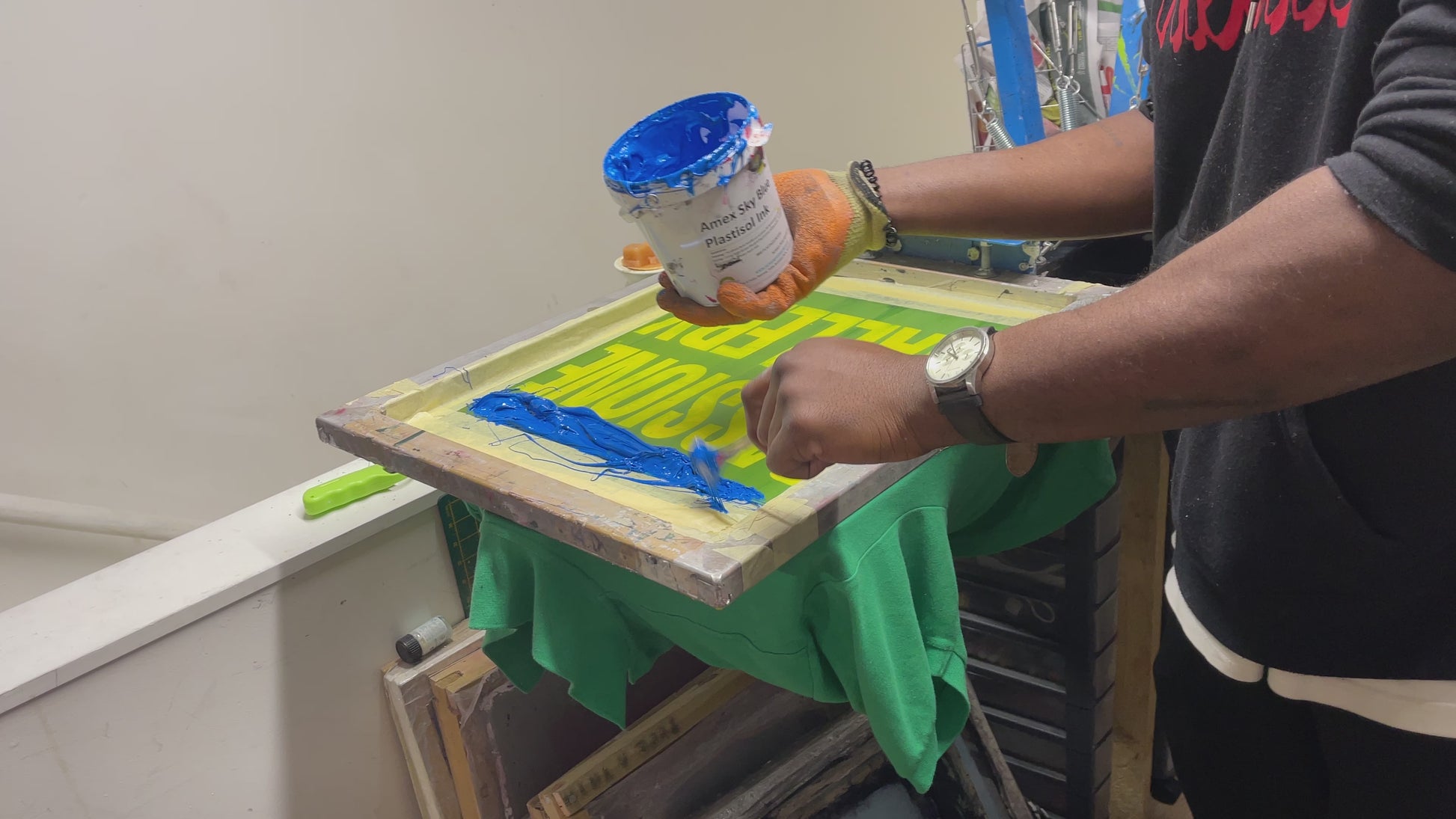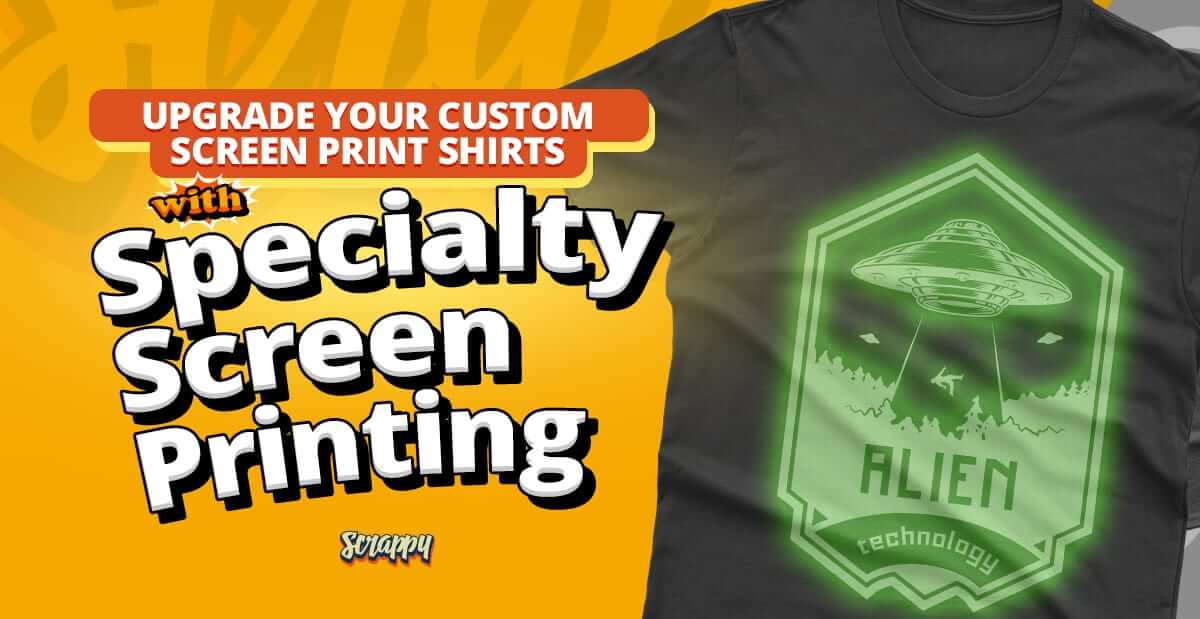Beginner-Friendly Screen Printing Kit for DIY Projects
The Ultimate Screen Printing Package: Crucial Devices for Effective Garment Printing
When it comes to screen printing, having the right devices can make all the distinction. What concerning the screens and inks? You'll soon discover just how these parts function together to boost your printing game.
Recognizing Display Printing Essentials
When you immerse yourself in screen printing, you'll uncover it's both an art and a science. Once dried out, you subject the screen to UV light with your layout put on top, allowing you to create a pattern.
Following, you'll set up your printing terminal, aligning your display with the garment. Utilizing a squeegee, you'll press the ink via the display, ensuring even coverage. The appeal of display printing depends on its versatility; whether you're publishing vibrant graphics or elaborate patterns, the procedure stays the very same.
As you technique, you'll learn more about ink types, drying times, and shade blending. Each print is a possibility to fine-tune your technique and express your imagination, making display printing a rewarding undertaking for anyone enthusiastic regarding style.
Important Elements of the Display Printing Set
To begin with screen printing, you need to understand the vital elements of your kit. You'll want to acquaint on your own with the fundamental equipment, the kinds of solutions and inks you'll use, and the devices for application. Each component plays a vital duty in accomplishing high-quality prints on your garments.
Basic Devices Overview
A well-equipped display printing kit is crucial for any individual looking to develop magnificent garment layouts. Beginning with a tough display printing framework, which holds your mesh securely for precise printing. With these important components, you'll have a strong structure for your screen printing journey and can concentrate on bringing your imaginative visions to life.
Inks and Solutions
After collecting the basic devices, your next focus needs to be on emulsions and inks, which play an important duty in accomplishing lively and long-lasting prints. When selecting inks, take into consideration water-based, plastisol, or discharge inks based upon the fabric type and wanted coating. Water-based inks are soft and eco-friendly on garments, while plastisol uses sturdiness and bright shades.
Emulsions, on the various other hand, are important for producing your displays. They assist develop the pattern needed for printing - custom screen printing. You'll desire to choose a top quality solution that suits your ink type and direct exposure method. Remember to keep inks and emulsions appropriately to keep their efficiency. With the right options, you'll establish the foundation for spectacular, professional-grade prints.
Devices for Application

Selecting the Right Screens for Your Tasks
When you're picking displays for your projects, the mesh matter and frame material are essential elements to consider. A greater mesh count is fantastic for great information, while the right structure product can enhance longevity and security. Understanding these elements will help you achieve the finest cause your display printing ventures.
Screen Mesh Count
Selecting the appropriate display mesh count is vital to accomplishing the wanted lead to your screen printing tasks. The mesh count describes the number of threads per inch in the display, affecting just how much ink obtains transferred onto your garment. For detailed styles and fine lines, choose for a higher mesh count, usually between 200 and 305. If you're collaborating with thicker inks or strong styles, a lower mesh matter, around 110 to 160, will certainly function much better. Constantly consider the sort of ink and textile you're utilizing, as these aspects affect the mesh count option. Trying out with different counts can assist you discover the excellent balance for your specific projects, guaranteeing crisp, dynamic prints each time.
Frame Product Options
The display framework material you choose plays a substantial role in the quality of your prints. You have actually obtained a few choices to review, each with its advantages. Aluminum frames are lightweight, durable, and immune to rust, making them best for long-term usage. They provide exceptional stress, guaranteeing crisp prints. On the other hand, wood structures are much more conventional and can be a lot more inexpensive, yet they're heavier and might warp over time. You could favor aluminum for its integrity if you're just starting. For bigger tasks, pick structures that can withstand the tension needed for great information. Eventually, pick a product that suits your process and budget while guaranteeing your prints appear looking sharp and professional.
Picking Inks for Various Fabrics
Just how do you assure your screen printing layouts look vivid and last on numerous textiles? Picking the appropriate ink is essential. For cotton, water-based inks are your best option. They saturate right into the material, providing a soft feel and excellent longevity. Take into consideration using plastisol inks if you're publishing on polyester or synthetic blends. They rest on top of the material, assuring brilliant colors and excellent attachment.
Don't forget specialized inks like discharge or metallic inks. Release inks can eliminate color from textile, leaving a soft print, while metallic inks add a glossy finish that sticks out. Constantly examine your inks on the particular material before devoting to a huge run; this assists you assess shade vibrancy and durability.
Finally, keep in mind the material's weight and texture. Choosing the appropriate ink for each and every fabric type will certainly assure that your designs not just look excellent however likewise hold up against the test of time.
The Value of Mops in Printing
Squeegees play an essential Check Out Your URL duty in achieving premium prints in display printing. They're your main device for moving ink with the pattern onto the textile, and the best squeegee can make all the difference. When you use constant pressure with a squeegee, you ensure an even distribution of ink, decreasing the opportunities of uneven or blotchy prints.
Picking the why not try these out ideal durometer or firmness of your squeegee is vital, as it affects just how much ink is drawn through the mesh. A softer squeegee is great for detailed designs, while a stronger one functions well for strong graphics. Additionally, the size of the squeegee must match your display dimension to enhance your printing process.
Taking some time to understand your technique with the squeegee will certainly cause cleaner, sharper prints. Do not underestimate this integral tool-- obtain to recognize it, and you'll elevate your screen printing game.
Preparing Your Art Work and Solution
Accomplishing wonderful prints starts long prior to you grab your squeegee. First, verify your artwork is high-resolution and formatted correctly. Use vector graphics for crisp lines and scalability. When you enjoy with the layout, print it on openness movie, keeping in mind that the darker the image, the better it obstructs light during direct exposure.
Next, select the appropriate emulsion for your task. Apply it equally to your screen in a dimly lit area to stop premature exposure. Permit it to completely dry entirely, preferably in a dark area, to guarantee exceptional results. Once your display is prepared, subject it to UV light according to your solution's directions. The light will solidify the emulsion where it strikes, leaving your design unexposed.
After rinsing the unexposed emulsion, let the display dry completely. With your artwork and solution prepared, you're set for the printing procedure!
Upkeep Tips for Resilient Devices
Although it might seem tiresome, regular maintenance of your screen printing tools can considerably extend their lifespan and guarantee regular results. Start by cleansing your displays immediately after usage. Make use of a mild solvent to remove ink residue; this assists prevent accumulation that can spoil future prints. Shop your displays flat to avoid bending, and keep them away from direct sunlight. custom screen printing.
For squeegees, clean the blade after each usage to avoid ink from drying out on it. Routinely examine for nicks or damage and replace them as needed. Don't neglect your direct exposure system-- tidy the glass surface area consistently to verify optimal light exposure.

Regularly Asked Concerns
Can I Evaluate Print on Dark Colored Fabrics?
Yes, you can screen print on dark colored materials! Just utilize an ideal opaque ink developed for dark products. It'll ensure your styles stand out and look vivid against the textile's background. Satisfied printing!
How Do I Tidy My Displays After Printing?
To cleanse your screens after printing, you'll require a pressure washing machine or hose to remove excess ink. Use a screen cleaner or light detergent with a soft brush to scrub away residue. Rinse thoroughly.
What Safety Gear Do I Required While Screen Printing?
When display printing, you'll need handwear covers to protect your hands, a mask to prevent inhaling fumes, and safety and security goggles to protect web link your eyes from chemicals and inks. Being cautious guarantees a pleasurable and risk-free experience.
Can I Use the Kit for Other Products Besides Textile?
Yes, you can use the package for other products besides fabric. It works well on surface areas like plastic, wood, and paper. Just make certain the ink and techniques fit the product you choose.
Exactly how Long Does It Take for Ink to Treat?
Ink normally takes about 1 day to cure completely, but it can differ based on the kind and density. You'll wish to examine the producer's guidelines for specific curing times to guarantee excellent outcomes.
Using a squeegee, you'll push the ink via the screen, guaranteeing also coverage. You'll require a reputable squeegee, which assists equally distribute ink throughout your display.Selecting the best display mesh matter is vital to achieving the wanted results in your screen printing projects. The mesh count refers to the number of threads per inch in the screen, impacting just how much ink gets transferred onto your garment.To cleanse your screens after printing, you'll need a pressure washer or hose pipe to eliminate excess ink.